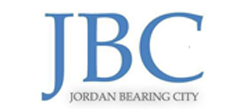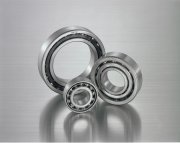The standard contact angles are 15°, 30° and 40°. They are identified, respectively, by the supplementary codes “C”, “A” (omitted) and “B”. Bearings with a smaller contact angle are more suitable for applications involving high-speed rotation. Those with a larger contact angle feature superior axial load resistance. Angular contact ball bearings are often preloaded to enhance their rigidity and rotating performance. For high-precision matched pair angular contact ball bearings of class 5 or higher, which are used in machine tools and other precision equipment, the standard preload is specified in three levels: light (L) , medium (M) , and heavy (H) .
When this type of bearing is loaded radially, an axial component of force is produced. In this case, two (facing one another) or more bearings are matched and assembled.
This type of bearings consists of two single-row angular contact ball bearings matched back-to-back, with inner and outer rings integrated.

 ar contact ball bearing
ar contact ball bearing